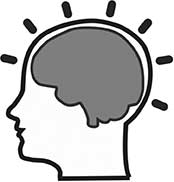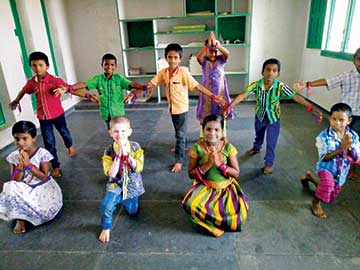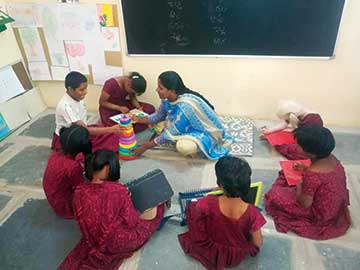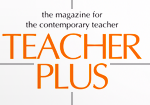Simple inclusive strategies
J. S. Sudhir Markham
 A student with intellectual disability may have limitations in intellectual functioning and adaptive behaviour.
A student with intellectual disability may have limitations in intellectual functioning and adaptive behaviour.
Limitations in intellectual functioning are also referred to as mental retardation.
Adaptive behaviour refers to conceptual, social, and practical skills that all people exhibit in order to function in their daily lives. Conceptual skills include skills such as literacy, self direction, and concepts of number, money, and time.
In inclusive environments, depending on the child’s abilities and needs, students with intellectual disabilities need adaptations to participate in the regular school curriculum and various school activities, as well as to make use of instructional materials. Such adaptations in school are usually referred to by the terms “accommodations” and “modifications”. Different school systems attach different meanings to these terms.
“Accommodation” usually refers to a change in the way your child is taught or tested without changing the standard of learning or performance or the requirements that she needs to meet. Some examples include having extra time to complete assignments, using project methods, having assignments or tests broken up into smaller parts, or completing assignments in a quiet setting away from other students.
“Modification” commonly refers to a change in what your child is learning (reducing the content, teaching a lower grade curriculum which is appropriate to the students current learning level) or tested on that changes the standards or requirements s/he needs to meet. Being taught materials at a lower grade level or having to complete fewer items in a test are examples of modifications.
 Modifications for students with intellectual disability
Modifications for students with intellectual disability
Quiet work space: Children with intellectual disabilities tend to get distracted more easily and often struggle with attention. Ensure that the child has a work/study space that is quiet and free from distractions.
Functional activities: Children with intellectual disabilities learn better through functional day-to-day activities. Thus, instead of attempting to teach science theory or geography, it is better to teach practical things and functional academics.
Group learning: This is one of the most effective teaching strategies for students with intellectual disabilities. It is when you bring children together in a group to teach various skills. Children often do better when they are in a group. Behaviour difficulties are fewer, and children motivate each other. The only difficulty in group learning is that you need enough hands to help children learn together.
Positive reinforcement: is to reinforce the child positively every time he learns a new skill, or performs or practices a known skill. It is a great way to motivate children with intellectual disabilities. Use reinforcements that are appropriate for the child.
Repetition of concepts: Children with intellectual disabilities need to learn a concept in different ways and have the opportunity to practice it many times in order to learn and remember it. Allow time, as well as opportunities, to practice the skills that you have taught them.
Teacher-student ratio: These children require additional support and guidance as they work on their activities. Ideally, there should be at least 1 teacher for every 3 children with intellectual disabilities.
 Hands-on learning Children with intellectual disabilities learn a lot by performing tasks rather than just listening. Using all the senses also helps them learn and retain information better. Your classroom or teaching area must have space and resources to allow children with an intellectual impairment to do various activities that are functional as well as academic.
Hands-on learning Children with intellectual disabilities learn a lot by performing tasks rather than just listening. Using all the senses also helps them learn and retain information better. Your classroom or teaching area must have space and resources to allow children with an intellectual impairment to do various activities that are functional as well as academic.
Schedule
Children with intellectual disabilities find it hard to sit in one place and do an activity for a long time. The schedule must have activities that are of short duration, and must alternate between physical and sitting down activities.
Accommodations for teaching students with intellectual disability
For students diagnosed with an intellectual disability, learning in the classroom can be quite a challenge. It is your job, as the teacher, to accommodate such students’ needs so they can better access and learn the content. An accommodation is an adjustment to how information is presented to a student so they can better engage in learning.
Challenges of inclusion
With every type of classroom dynamic, there are always challenges. Here are some common difficulties for both students with and without disabilities.
• less one-on-one attention in a large group.
• students have trouble adapting to a demanding learning environment.
• child may feel singled out.
• often paired with one-on-one aids that have little training.
Inclusive education is a pathway to empower lives of persons with (dis)abilities!
What you can do
Plan your work: Generally, these children learn slowly.
Use different strategies to promote learning considering the needs of the students.
To simplify teaching and learning the teacher can
- teach lessons in smaller units and move from simple to complex tasks.
- give more time and practice.
- provide concrete examples.
- use multi-sensory approaches – visual, kinesthetic, tactile and auditory.
- use simple language.
- repeat with varied examples until the child demonstrates understanding.
- have a lot of activities to recall from memory.
- some children may have epilepsy and other neurological conditions. Medical advice is essential.
- some may need speech or physio-therapy.
- many children will have difficulty in applying what is learnt in one situation to another. Teach in a variety of settings.
- though in an inclusive class, you may plan individual lessons for these children for best results.
The author is Lecturer in Special Education, Swayamkrushi, Hyderabad and Consultant on Inclusive Education for Rural Development Trust, Anantapur, Andhra Pradesh. He can be reached at sudhirmarkham@gmail.com.



